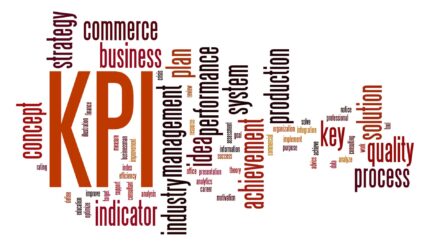According to a survey by Barclays Bank, only half of SMEs have a business plan and of those only half actually refer back to them.
Having looked at several hundred over the years I think I know the reason why.
They are typically way too long, are based on extrapolations (where numbers rarely plateau let alone fall) which then act as convenient stepping stones to blue-sky-high results.
Most business plans are written with the wrong audience in mind

When you look at the various templates available, you’ll see they are much of a muchness. It’s not that they are wrong as such, it’s more that they are clearly designed for someone other than the business owners.
They’re written to influence lenders.
And maybe if you were a mischievous type, you could argue that business plans are therefore as long as they need to be to cover the posteriors of everyone involved in that funding decision.
Too much focus on the ‘Why’ and the ‘What’ – not enough on the ‘How’
There’s a question more clients should ask more often of their business coaches, which is: How exactly will this help me grow / develop myself, my team and my business?
It’s too easy to have a discussion and generate some interesting ideas and then plough on with doing the thing. And what gets lost is the impact you’re trying to cause.
Focussing on the desired impact is the thing that maintains momentum and stops you getting bogged down in the weeds.
This is the basic problem with writing a business plan with the wrong audience in mind.
Creating your (great) strategic business plan
Some of what you’ll find in the templates is good to use as it is.
But there are 2 important things to consider.
First, it’s vital to visualise how and when you’ll be using it. You should be referring back to your plan at least once a quarter. It plays a key role in helping you review how successful your last quarterly plan was – and in setting your intentions for the coming quarter.
Second, it should act as a natural bridge between your big aspirations and what you need to do to get there. It’s all very well painting a beautiful picture of ‘Oz’ – but it won’t do you much good unless you can build the Yellow Brick Road. (due credit to Keith Cuningham for that one).
Start your business plan with your Vision
As with Stephen R Covey’s 2nd habit of highly effective people (Begin with the End in Mind) this is the leadership function.

It’s your opportunity to paint a vibrant picture of what ‘awesome’ looks like in the future. Exactly how far into the future you want to look will depend on a variety of factors, but anywhere from 3-10 years would work.
You can do this in verse form, bullet points, pictures or indeed iambic pentameter. As long as it resonates with you.
But it needs to be detailed as well as aspirational. Saying you want to be (eg) the best is less effective than saying what precisely that means. It’ll fire up your subconscious and get those ideas popping into your head ‘out of the blue’.
Then craft your Big Hairy Audacious Goals
Lots of people advocate using the S.M.A.R.T. (Specific, Measurable, Actionable, Realistic & Timebound) framework for goal-setting but I’ve found it to be a little on the ‘dry’ side. It’s also pretty cumbersome when you try to work through it in practice.
I prefer D.U.M.B. goals.
Dream (or Vision) Orientated, Uplifting, Meaningful and Behavioural.
These goals should lift your energy as well as focus the mind.
I suspect you’ll find a limited (c5?) number of D.U.M.B. goals will do just this and cover all the bases of your business plan. Plus, you can use them again and again in your quarterly plans. Remember: don’t change the goal – change the plan.
The detail can come later as your strategic business plan naturally feeds into your quarterly plans. And the SMART framework fits the detailed aspect of action (quarterly) plans much better than for goal setting.
Next comes the secret sauce of creating a truly valuable business plan: The Variables
A great question to ask when mapping put a strategy or plan is ‘What needs to be true for our Vision to become a reality?’
Some of these answers might be:
- We’ll need to have a high-quality mix of products and cater for all our client’s needs in our area
- We’ll provide industry leading customer service – in the eyes of our customers
- We’ll be great at forging connections / relationships with our customers so they keep coming back to us
- Our team will work efficiently and commercially (great for architects, lawyers etc)
- We’ll provide the best product in our market – and charge a fair price for that
- We’ll use the best systems, training and organisational tools to optimise the balance between revenue earners and revenue supporters
- We’ll have the most organised finance & admin team and systems

The next step is to think of a number or KPI which either encapsulates or in some way reflects this.
Here are some choices of KPI which would indicate success in the questions above:
- Average £ spend per customer
- Customer satisfaction score & Percentage Churn Rate of lost customers
- Number of transactions per customer & Average customer retention in months (great for service businesses)
- % of worked hours that are invoiced
- Gross Margin %
- Net Margin %
- Average debtor days (great for businesses who don’t invoice ‘up front’).
Business plans contain very few of these types of numbers – which is crazy because this is what reveals the real DNA of a business. What it is beneath the skin.
Each one can have a specific aim or target – that is easy to communicate and hard to ignore. And for existing businesses you can have a measurement of what it is now. This target should be at least in the same ballpark as the specifics of your Vision and Big Hairy Audacious Goals.
Stephen R Covey’s 3rd Habit (Put first things first) is the management habit. And the work you’ll do on working out your variables and creating your dashboard is the work that makes it much easier to harness this 3rd habit.
Your main business (KPI) dashboard
I’ve outlined a great approach for creating your dashboard of KPIs (Key Performance Indicators) in a separate article. But in essence, the core of it is your list of variables.
So, once you create this, you’ve automatically got the main part of your dashboard ready to use on a month to month (or for some, weekly and even daily) basis.
What Systems will your business need to identify, budget for and implement?
Remember that ‘Systems’ stand for Save Your Self Time Energy & Money.
Or to put it another way: blood, sweat and tears will create a great job – it takes great systems to create a great business.
At a basic level, systems will be most valuable in the 5 core disciplines of your business:
- Marketing
- Sales
- Delivery of Product / Service
- Customer Service and
- Accounting
And lastly, your cashflow forecast

Cashflow forecasts are great for helping you navigate through a growth phase. They aid decision making immensely.
They also keep the focus on actual cash generated by the business through the various cycles. Because as we all know revenue is vanity, profit is sanity and cashflow is king.
There are cashflow forecasting tools available that plug into your accounting software or if you’re ‘old school’ you can build one very quickly on an excel spreadsheet. (I’ve got a template you can have – just drop me an email). The best way to do the ‘outgoings’ side of this exercise is to go through your bank statement and make sure everything is listed.
You should account for marketing investment, recruitment plans, cost of systems & software and include annual price rises for pretty much everything: offices, salaries, utilities and other providers.
Why is there no mention of marketing & USPs in this plan?
Simply, this is (or should be) too detailed and extensive to fit in here.
But it’s more than that.
Many business owners get trapped into a thought process that the business will automatically be profitable when it’s bigger. This ignores that truism of business that what we focus on improves – and what we ignore goes to pot.
If you ignore cashflow the business will eat it. Either in reduced pricing, fattening cost lines or lax invoicing & chasing.
Focussing on positive cashflow will ensure you get the maximin out of your business at every stage of development.
Which will only be good news as you add marketing and new business generation to the mix.
Using SWOTAD Analysis in business plans
Equally, I’ve left this out deliberately. An analysis of Strengths / Weaknesses / Opportunities / Threats / Advancements / Defences is a very valuable exercise to do periodically.
But there’s no need to keep it as part of a plan. It’s better to use the results to inform your plan.
I’d argue exactly the same for Competitor Analysis.
How long should a business plan be?
If you follow this approach, it should absolutely be no more than 4 pages – and ideally, it’d fit on 2. (not including the dashboard & cashflow forecast).
A document of that length is a ‘live’ document. Easy to share and communicate to others; easy to review and factor into quarterly plans.
Want to talk about any of this?
I’d be only too happy – give me a call or book in for a zoom coffee.





